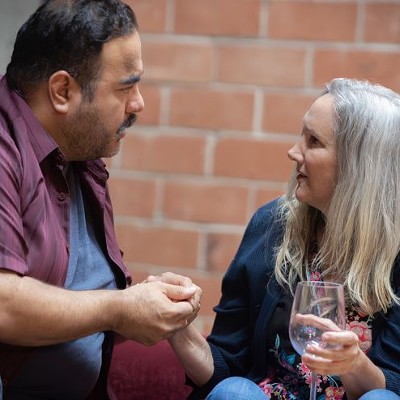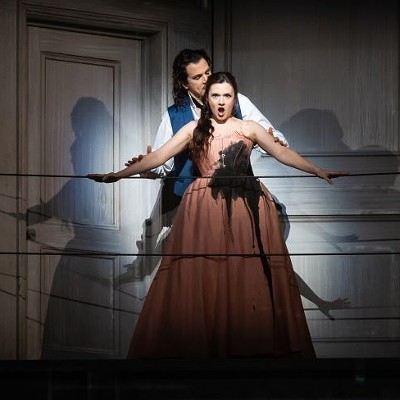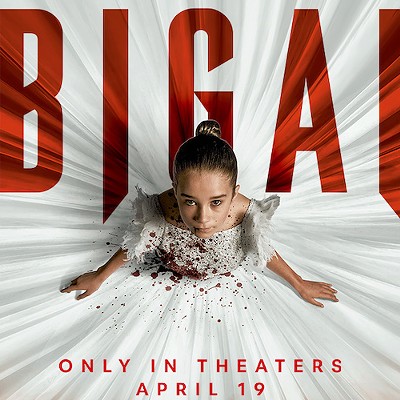Before she became a female member of the groundbreaking Association for the Advancement of Creative Musicians and prior to collaborating with all of the big names – Archie Shepp, Charlie Haden, James Blood Ulmer, Anthony Braxton, Rahsaan Roland Kirk – Amina Claudine Myers honed her chops in Texas churches.
At the end of the month, she returns to the Lone Star State (and only to Houston). It has been a few years since she’s been in Texas.
“I haven’t been back since 1957,” says Myers, who lives near Times Square in midtown Manhattan, during an extended phone interview. “I lost contact with everybody.”
Myers was born in Blackwell, Arkansas, population about 250. Later her family moved to Dallas, into an area Myers calls the “Roosevelt Addition.” Also known as Roosevelt Heights, the south Dallas neighborhood sprouted to life with African-American laborers from East Texas in the 1940s. The houses, however, were built in a Trinity River floodplain.
According to reports of the time, the area was nailed with flood after flood in the 1960s until one in 1971 that proved to be the death knell. Today wetlands, which bloom with waterfowl, trees and weeds, have reclaimed the area located roughly southwest of South 2nd Avenue and Bruton Road near U.S. 175.
Before a modern-day apocalypse swallowed Roosevelt Heights, Myers learned voice, classical piano and hymnals at Lincoln and Madison high schools. As a teenager, she directed choirs at her church in Dallas and performed piano in Dallas and Denton.
“I got introduced to a lot of music in Dallas, especially gospel. I got a good musical education while living in Dallas,” says Myers, who returned to Arkansas and graduated in concert music and music education at Philander Smith College in Little Rock.
She headed to Chicago to teach music to seventh- and eighth-grade public school kids. After she started playing piano and organ at a church on the West Side, she met Ajaramu Shelton, who was a member of this new organization called the AACM.
Founded on Chicago’s South Side in 1965, the influential collection of African-American creatives gave (and continues to give; the organization is in its 52nd year) a safe space for experimental artists to develop into unique performers, writers and composers. Roscoe Mitchell and Alvin Fielder, who we’ve profiled in the past, are among the AACM's cofounders.
“That’s when my whole musical abilities opened up. Way up. Roscoe, Muhal [Richard Abrams], Kalaparusha [Maurice McIntyre] and Joseph Jarman were all there playing music, painting, writing poetry, doing everything,” says Myers. “That inspired me to try new things.
“I had been playing with Gene Ammons and Sonny Stitt. In the meantime, I was giving AACM concerts so I started hearing other things I wanted to do. I was hearing other sounds. I started doing my own thing,” says Myers, who wrote a play called I Dream, a dialogue-free production featuring a Myers-formed choral music group built on Myers’s history with jazz, blues and gospel. In other words, she was able to sculpt a creative piece out of what most people would consider so-called stodgy, old, uninteresting church music.
“The AACM was a beehive of activity,” says Myers, 75. “Everything was like a family. You could ask the original members, like Roscoe or anybody else, to play for you or with you. It was a wonderful experience and that’s what encouraged me and inspired me to be where I am today.”
In 1976, with a dried-up club scene and experimental musicians leaving Chicago left and right, Myers moved to New York, where her practices developed to include writing for theater, acting and composing for off-Broadway plays. Myers, who has also collaborated with Eddie Harris, Henry Threadgill and Jim Pepper, became the organist in the Lester Bowie Quintet and joined Haden’s Liberation Music Orchestra in 1985.
In recent years, Myers has returned to an often-pigeonholed instrument: the pipe organ. She has performed structured and improvisational solo pipe-organ concerts in New York City, upstate New York and Philadelphia and overseas in places like Hungary, all while showing that the instrument is just as dynamic as any.
“It’s like a large symphony,” says Myers. “You need time to work and really learn the organ, but you can still extend the sound. The sounds that you can get out of it are incredible.”
“What I like about improvisation is that the music opens up and extends and you’re not set in a box," she adds. "You don’t have to play this thing over and over and the changes over and over. It doesn’t go like that.”
Nameless Sound presents Amina Claudine Myers in two distinctly different concerts. On Wednesday, April 26, Myers will present a program for piano and voice. On Thursday, April 27, Myers performs a solo pipe organ concert on a 1938 Aeolian-Skinner Cathedral Organ. Both concerts are scheduled to take place at 8 p.m. at Christ Church Cathedral, 1117 Texas. Tickets cost $10 to $20; free for students under 18. For more information, call 713-928-5653 or see namelesssound.org.
Support Us
Houston's independent source of
local news and culture
account
- Welcome,
Insider - Login
- My Account
- My Newsletters
- Contribute
- Contact Us
- Sign out
Innovative Jazz Organist Amina Claudine Myers Returns for Rare Texas Concerts
Steve Jansen April 13, 2017 8:00AM

Amina Claudine Myers
Courtesy of Nameless Sound
[
{
"name": "Related Stories / Support Us Combo",
"component": "11591218",
"insertPoint": "4",
"requiredCountToDisplay": "4"
},{
"name": "Air - Billboard - Inline Content",
"component": "11591214",
"insertPoint": "2/3",
"requiredCountToDisplay": "7"
},{
"name": "R1 - Beta - Mobile Only",
"component": "12287027",
"insertPoint": "8",
"requiredCountToDisplay": "8"
},{
"name": "Air - MediumRectangle - Inline Content - Mobile Display Size 2",
"component": "11591215",
"insertPoint": "12",
"requiredCountToDisplay": "12"
},{
"name": "Air - MediumRectangle - Inline Content - Mobile Display Size 2",
"component": "11591215",
"insertPoint": "4th",
"startingPoint": "16",
"requiredCountToDisplay": "12"
}
,{
"name": "RevContent - In Article",
"component": "12527128",
"insertPoint": "3/5",
"requiredCountToDisplay": "5"
}
]
KEEP THE HOUSTON PRESS FREE...
Since we started the Houston Press, it has been defined as the free, independent voice of Houston, and we'd like to keep it that way. With local media under siege, it's more important than ever for us to rally support behind funding our local journalism. You can help by participating in our "I Support" program, allowing us to keep offering readers access to our incisive coverage of local news, food and culture with no paywalls.
Steve Jansen is a contributing writer for the Houston Press.
Contact:
Steve Jansen
Trending Arts & Culture
- Love is in the Alley's Charming Production of Brontë Classic Jane Eyre
- Whose Story is It in The Father at 4th Wall Theatre Co.
- Fallout Successfully Makes the Transition From Video Game to Streaming Show
-
Sponsored Content From: [%sponsoredBy%]
[%title%]

Don't Miss Out
SIGN UP for the latest
arts & culture
news, free stuff and more!
Become a member to support the independent voice of Houston
and help keep the future of the Houston Press FREE
Use of this website constitutes acceptance of our
terms of use,
our cookies policy, and our
privacy policy
The Houston Press may earn a portion of sales from products & services purchased through links on our site from our
affiliate partners.
©2024
Houston Press, LP. All rights reserved.





